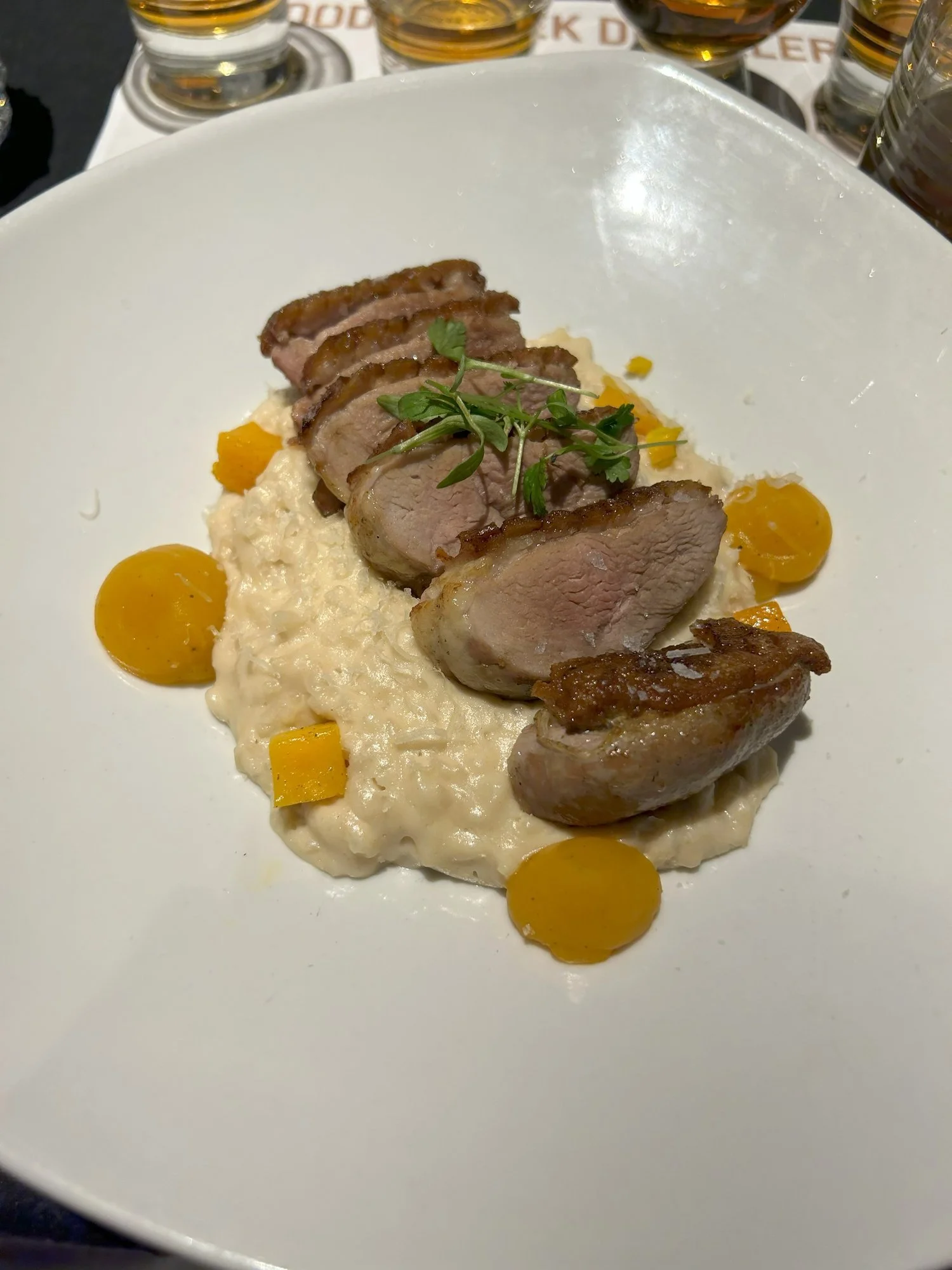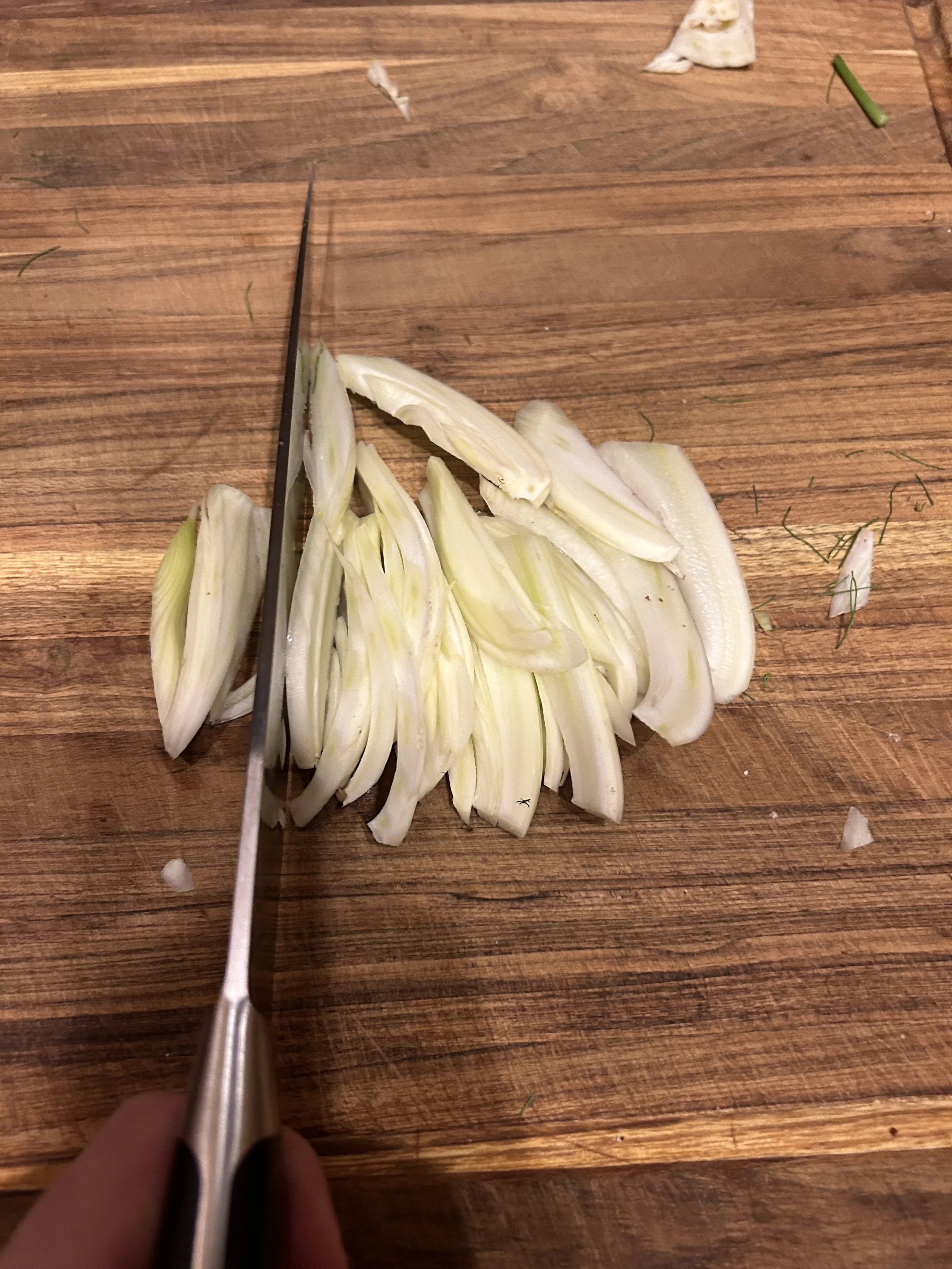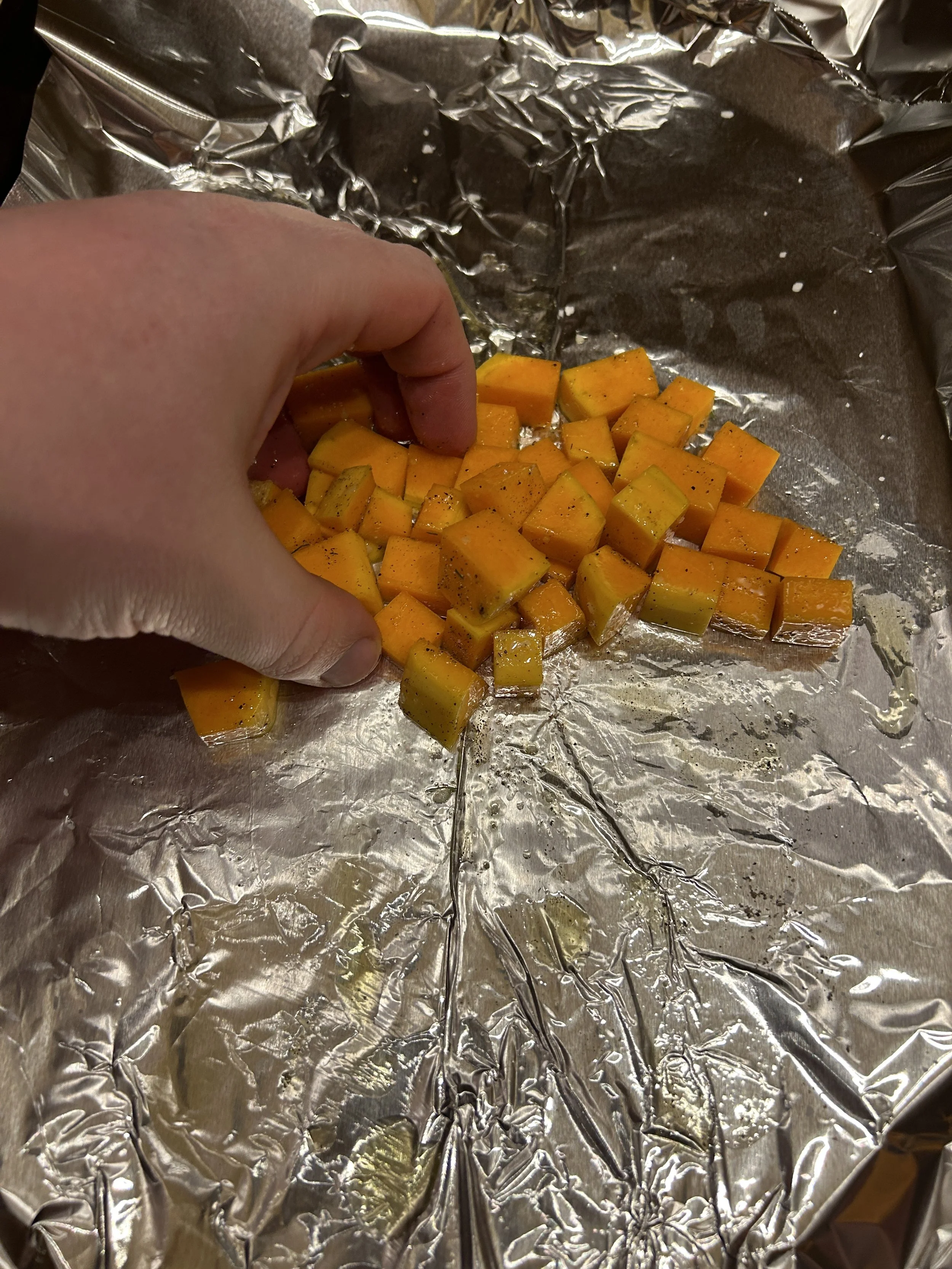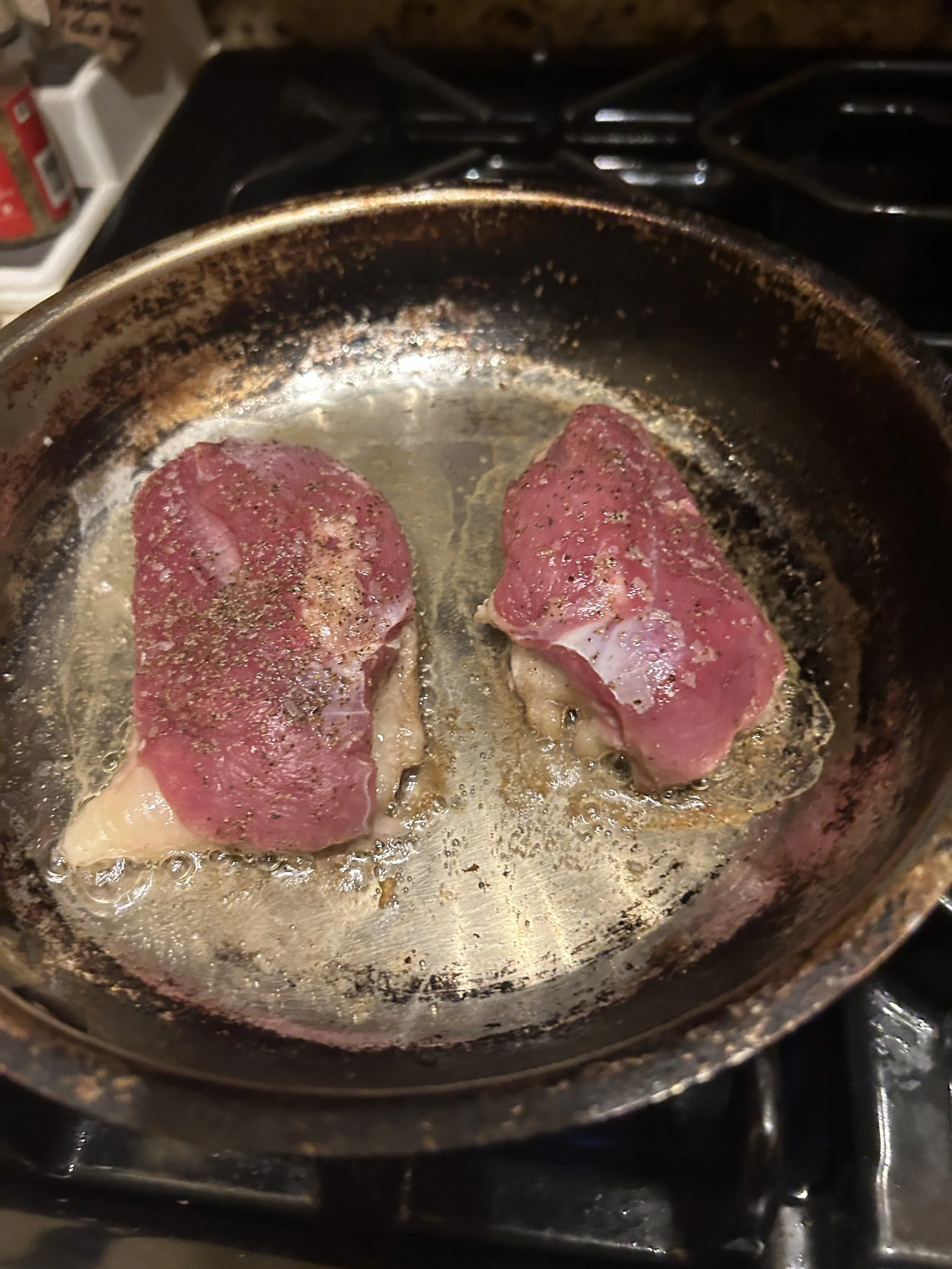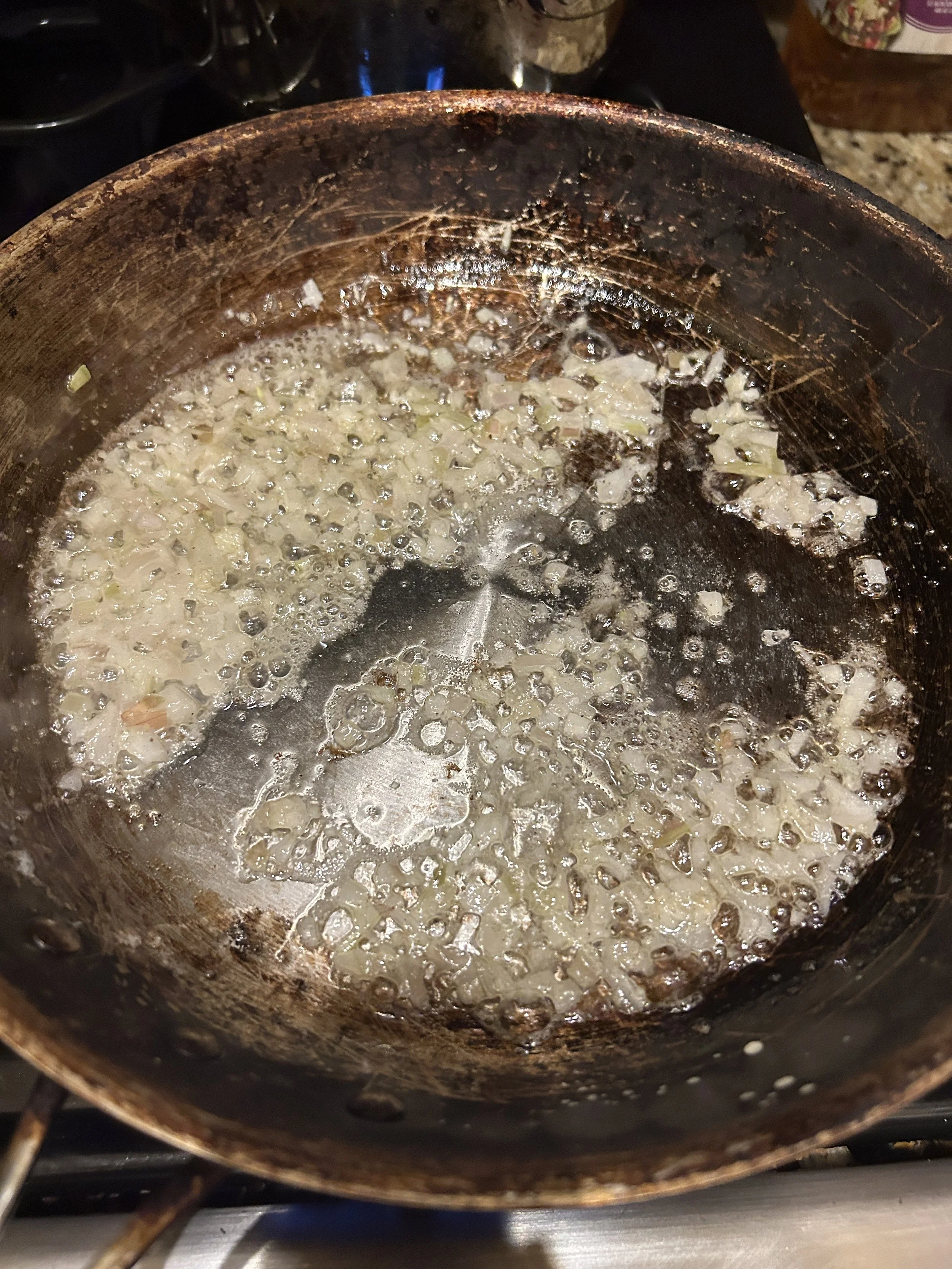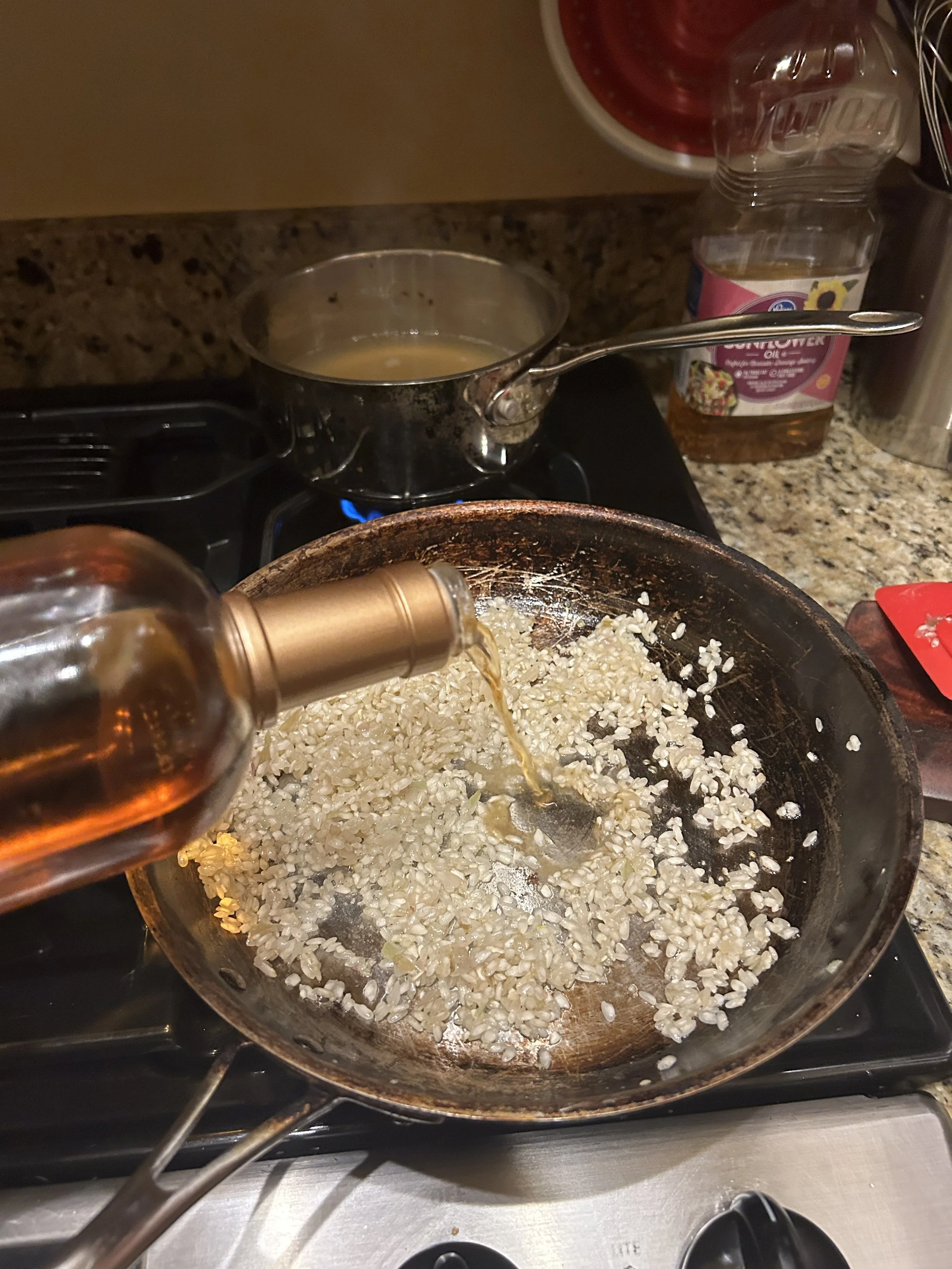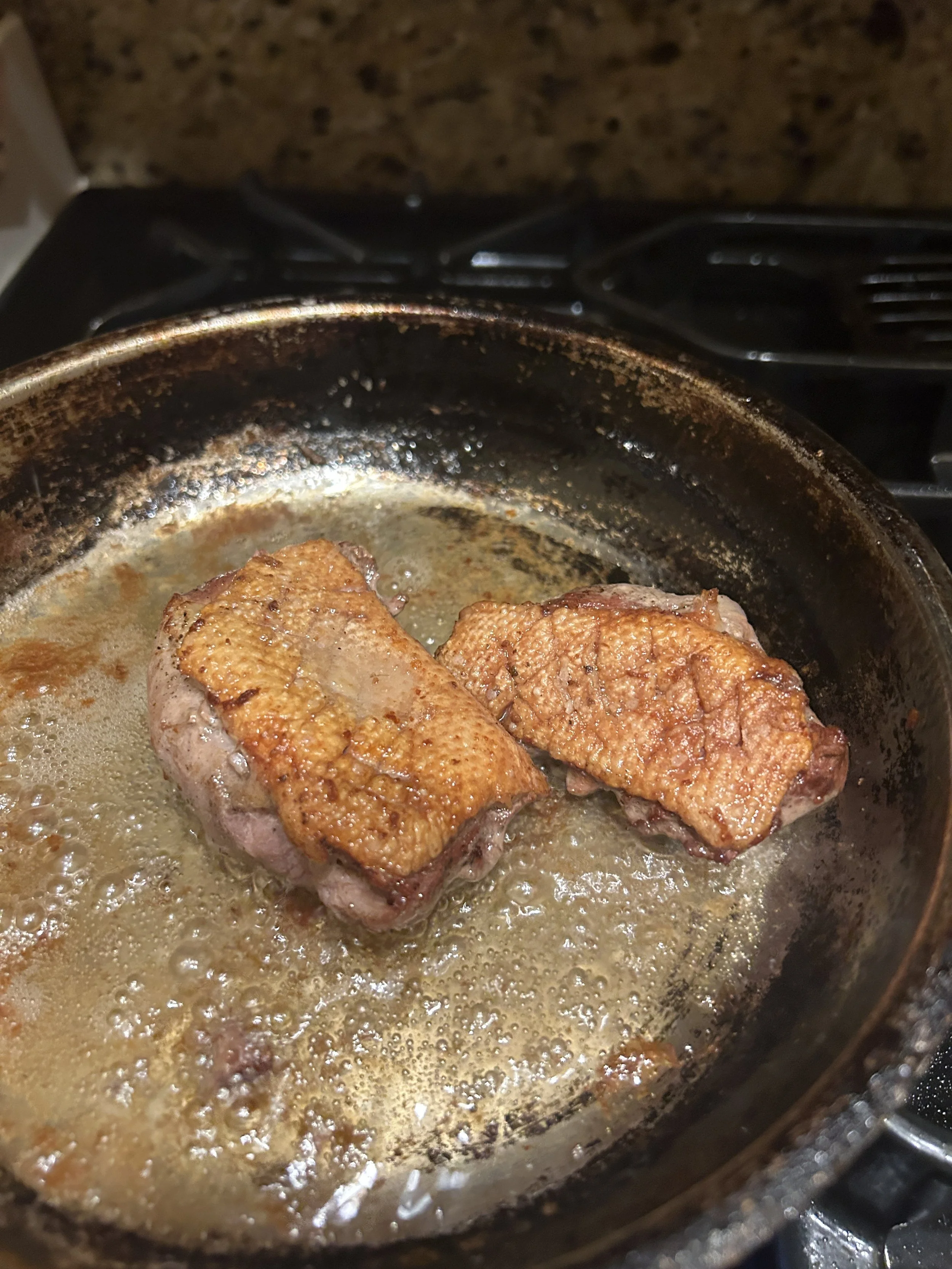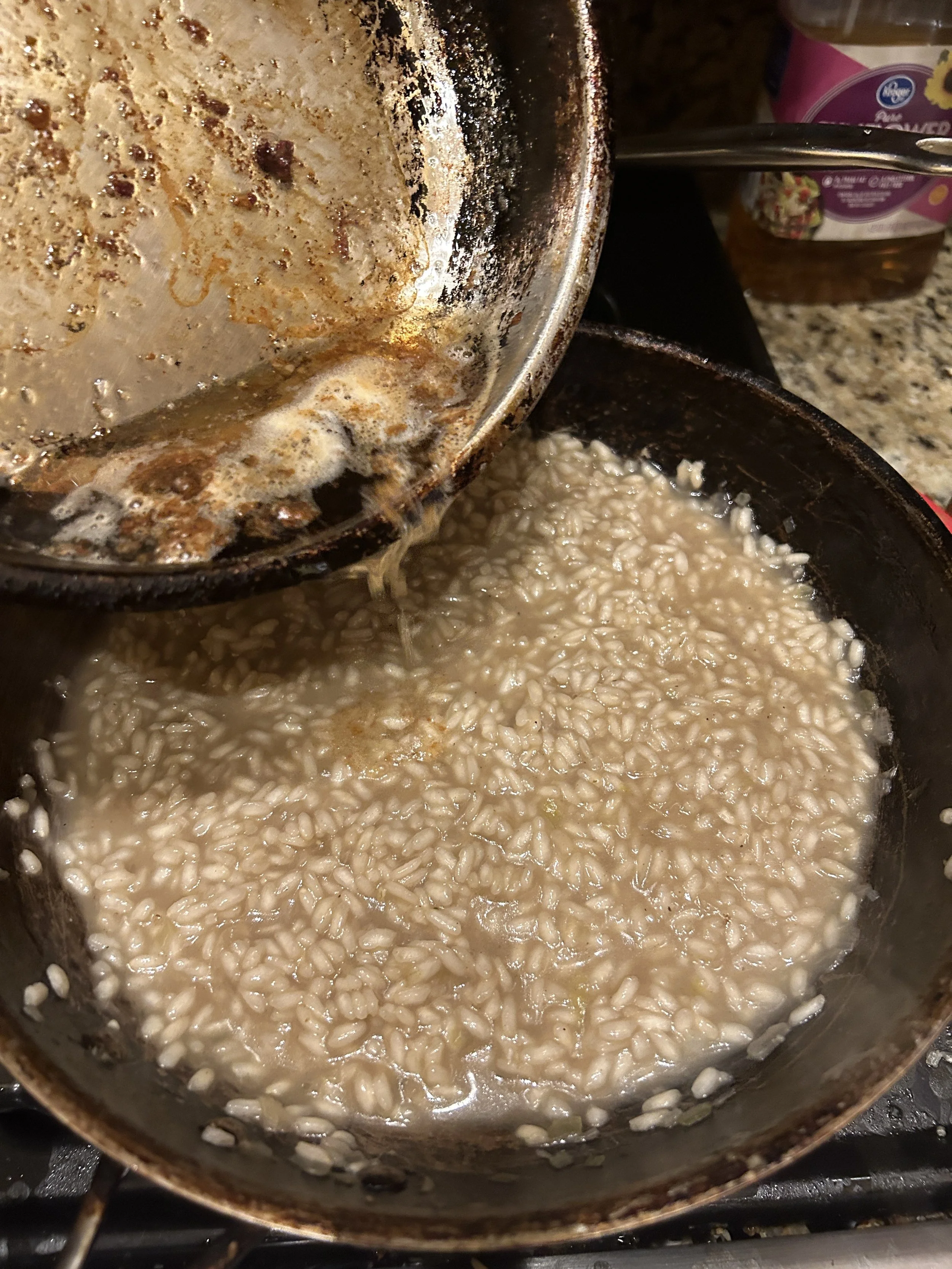Duck with Squash Risotto
Alright, we’re about to get a bit fancy here, but who says that’s a bad thing?
Today, I’ll be preparing a dish that I came up with, it’s seared duck breast with bourbon-butternut squash risotto and a fennel salad.
This dish is inspired by a dish I had recently at one of the dinners at the Limelight hotel in Snowmass, Colorado, but I will be doing it my way. In fact below you can see the original dish that I tasted.
This dish in particular also featured the duck along with a porcini risotto, some butternut squash cubes and a squash puree. The dish was great, but I found that it lacked a bit of freshness and acidity to counteract that rich duck and risotto, so I thought that the fennel salad would be a great way to add just that.
Also, I wasn’t in the mood for the porcini risotto, so since it was a whiskey-tasting dinner that I had the original dish at, I thought I’d do a bourbon risotto. I’m also not going to bother with the squash puree, that just seems like extra to me, but I will be roasting some butternut squash cubes that I’ll add to my risotto. I think it’s all going to be delicious.
How to cook Duck Breast
Duck might be unfamiliar to the American palate, but I can tell you that it’s a real treat, especially when it’s cooked right.
The main thing you need to know about duck breast is that there is a very thick layer of fat that sits underneath the skin, delicious fat that chefs all over use for things like roasting potatoes, roasting vegetables, and even frying eggs, in fact I’ll be adding a bit of duck fat to my risotto. However, if this fat isn’t rendered properly, the skin can come out a bit flabby and chewy.
The key to a perfectly cooked, crispy-skinned duck breast is to score the fat before cooking, keeping the heat low, and cooking the duck about 90% on that skin to render out as much fat as possible to get the skin as crispy as possible.
Also, unlike chicken, duck is full of muscle fibers that behave more like beef, so it is ok to eat a medium-rare duck. Whether or not it’s safe is up to debate, I wouldn’t serve this to a young kid, someone who is very old, or someone who has a health issue. Myself as a foodie who is not afraid of pink is fine with it.
I think I’ve quacked enough about this, let’s get cooking.
Duck with Squash Risotto
Serves 2
Time: 45 minutes
For the Fennel Salad
1 medium bulb of fennel
1 tablespoon of Olive oil
2 teaspoons of lemon juice
Salt and Pepper
For the Butternut Squash:
1 butternut squash (2-3 pounds)
Olive oil
Salt and Pepper
For the Duck:
2 duck breasts (8-10 ounces each)
Salt
For the Risotto:
2 tablespoons of butter
1 shallot, minced
2 cloves of garlic, minced
3/4 cup of arborio rice
1/2 cup plus 2 tablespoons of bourbon
5-6 cups of low-sodium chicken stock/broth
1/2 cup of grated parmesan cheese
Freshly ground black pepper
Step 1: Make the Fennel Salad
Cut the fennel bulbs into quarters, but reserve about 2 tablespoons of the fennel fronds for garnish.
Cut out the core, then thinly slice the fennel into 1/2-inch slices. Toss the fennel with the olive oil, lemon juice, salt and pepper, then set aside while you make the rest of the dish.
(Unlike most leafy greens, then fennel isn’t going to wilt after 30 minutes-an hour of being dressed, so you can definitely do this before you do anything else and it’ll be ready when everything else is ready. Although if you’d rather dress the salad at the last minute, then that's fine too.)
Step 2: Prepare and cook the Butternut Squash
Preheat the oven to 400 degrees and line a baking sheet with foil. Pour the chicken stock for the risotto into a small pot and place it over medium-low heat so it can be nice and warm when you’re ready.
Cut the top and bottom off of the butternut squash, then cut it in half crosswise, separating the bulbous area where the seeds are from the narrow end. Cut the bulbous area in half, then use a spoon to scoop out the seeds and pulp. Use a peeler to remove all of the skin; the squash flesh can be a bit slippery, so be careful, then use a sharp knife to cut it down into small cubes. See? It’s not that hard.
You’ll only need about 1 1/2 cups of squash cubes for this dish, the rest can be saved for later. Butternut squash makes great soups, sauces, and you can even spiralize it for squash noodles.
Place the squash cubes onto the baking sheet, toss with olive oil, salt and pepper, then roast for about 30-35 minutes, or until the squash is tender and browned.
Step 3: Start Cooking the Duck
Take a sharp knife, as sharp as possible, and, starting from one end of the duck breast, use it to cut diagonal slits along the duck skin, about 1/2 inch between each cut. You want to be careful not to cut too deep into the flesh, because then the flesh will be cut into shreds and not look as nice. Once you’ve gone all the way across the duck, turn it 90 degrees and do the same thing, creating a little crisscross pattern.
Season the duck on both sides with salt and pepper, then place into a cold, dry pan. Might sound odd to be putting the duck into a cold pan, but this is how we’re going to start the important process of rendering the duck skin.
Place the pan over medium-low heat then let the duck sit there until the fat has rendered and the skin is very brown and crispy, it’ll take about 15-20 minutes.
(I’m not too worried about the duck burning as the heat is so low, but you should still keep an eye on it.)
Step 4: Make the Risotto
While the duck is cooking, melt the butter in a wide skillet over medium heat. Add the minced shallots, garlic, and a pinch of salt, then cook for 1-2 minutes, or until the shallots are translucent and fragrant. Add the rice, then stir and cook for another minute to lightly toast the rice.
Carefully add 1/2 cup of the bourbon then cook, constantly stirring, for about 3-4 minutes or until the bourbon is nearly evaporated.
(Now you are in full risotto-making mode. You’re going to be constantly stirring the rice and adding stock until the rice is cooked. There is a hack where you can par-boil the rice before making it into risotto, that’s how they do it in restaurants, but since the duck takes a while to cook anyway, I say to go ahead and start with the raw rice)
Add about a ladle-full of hot stock to the rice, or enough to cover the rice, then continuously stir the rice for about 5 minutes, or until the stock has nearly evaporated, then add some more stock. Keep doing this, adding more stock about 4-5 times total, until the rice is tender and you can start to see a nice creaminess form.
Once the rice is cooked and there’s still about enough liquid to cover the rice, turn it off and let the rice relax for at least 10 minutes.
Step 5: Finish the Duck
Once the duck skin is brown and crispy, and this may happen before the risotto is ready, flip it over to the flesh side and let that cook for 2-3 minutes for medium-rare. Remove the duck from the pan to rest and reserve about 2 tablespoons of the duck fat.
Step 6: Finish the Risotto then Plate
Once the rice has rested, stir the duck fat, remaining 2 tablespoons of bourbon, roasted squash, and parmesan into the risotto. Season with pepper, and, if needed, loosen with more chicken stock. Ideally, risotto should be loose enough to be able to spread out onto a plate.
Spoon the risotto onto a plate, then top with the fennel salad. Thinly slice the duck breast, then fan on top of the fennel. Garnish with fennel fronds.
Not to brag, but the final dish was fantastic.
The duck was perfectly cooked, it had that nice crispy skin encasing the tender meat, the risotto had a perfect creaminess with an added flavor from the bourbon, and that fennel provided some extra crunch and freshness, as I expected.
I will admit that I did burn my squash a little bit, I did have my oven on at 425 and not 400 and I probably should’ve tossed the squash halfway through, however…I wasn’t mad about it. There was an extra rich toasty flavor from the slightly-burned squash that was quite pleasant to taste!
This is a great special occasion dinner that I would definitely make again.

